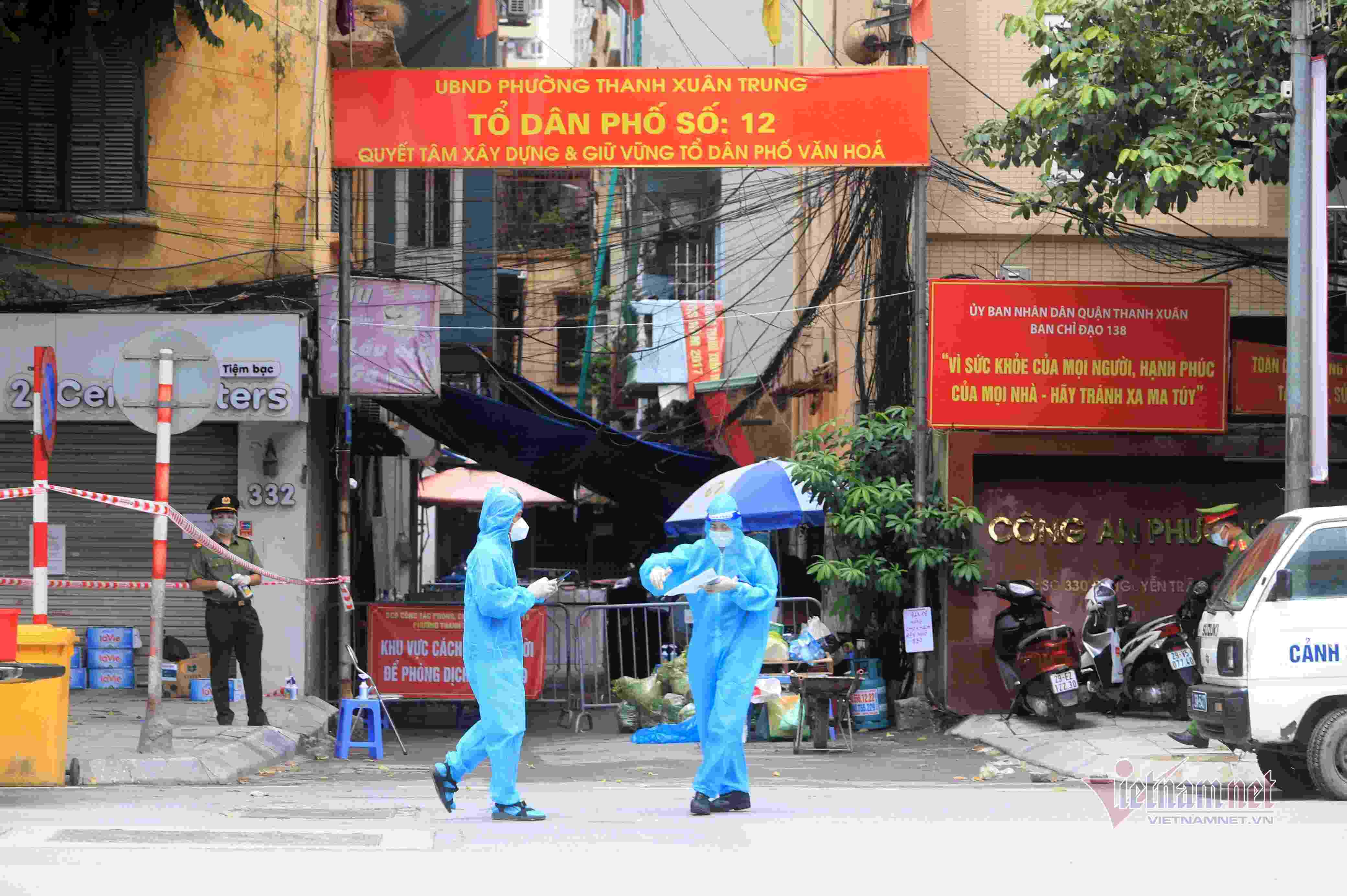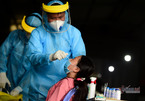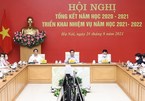
As of August 31, Hanoi had reported 3,268 Covid-19 cases during the fourth pandemic wave, including 1,547 cases transmitted in the community. The Hanoi Healthcare Department reports dozens to over 100 new infections daily.
Hanoi is applying its third social distancing campaign expected to last until 6 am on September 6.
Hung said the city still has a lot of hotbeds in inner districts with high numbers of infections. The hotbed in Thanh Xuan Trung Ward, for example, has over 300 cases.
Hung noted that the Covid-19 breaks out in places with specific characteristics.
“Thanh Xuan Trung, for example, is an area with many small alleys and old collective quarters, where the population density is high, making it difficult to ensure safe distancing,” he explained.
“The awareness of people about preventive measures is also a problem. If people are still communicating and meeting each other, the virus will spread very rapidly, right within these isolated areas,” he warned.
He said that Hanoi has been doing well in preventing and controlling the outbreak. When the fourth wave occurred, local authorities and healthcare sector were able to control hotbeds promptly. The hotbeds were isolated to prevent spread to other areas.
However, Hung pointed out that it is very difficult to eliminate all positive Covid-19 cases. Hanoi has been organizing large-scale testing in all high-risk areas, but the solution finds negative or positive cases only at the time of testing.
Meanwhile, though social distancing is being applied, people still have to shop and workers still have to go to the office, so communication among people and different areas is inevitable.
Pathogens can also enter the city through goods exchange between Hanoi and pandemic-hit provinces.
“It’s impossible to stop all goods exchange and travel activities. The risk always exists,” he said.
Hung said that the Delta variant spreads rapidly and is highly contagious. A report found that only 40-50 percent of people aged over 18 have received only one shot of the vaccine, and this is not enough to help prevent the spread of the virus.
Hung noted that the Covid-19 outbreak in Hanoi would be worse if the city had not imposed social distancing. If so, the number of infections would not just be under 100 a day as it is now.
He stressed that social distancing is an important measure that needs to be applied if vaccination coverage is not large enough to protect the community from SARS-CoV-2.
“Hanoians should be aware that the struggle against Covid-19 will last a long time as the pathogens have spread in the community and it has broken out in other cities and provinces,” he said.
Solutions
According to Hung, the municipal authorities will decide what to do after September 6 when the current social distancing campaign ends.
The vaccination rate and the ability to control hotbeds will be evaluated.
“In the conditions of social distancing, Hanoi has been doing well with its pandemic prevention and control. If the city loosens completely, the risk will be very high,” he said.
“I think that local authorities can consider loosening tight control in some safe zones, but they need to be ready to re-impose social distancing if infections are found in those areas,” he said.
He said it was necessary to gather all vaccine sources for people at high risk, including older people and people with underlying health conditions.
“Our goal for the immediate time is not containing the pandemic completely, but minimizing the death rate and the rate of severe cases who need to be hospitalized. This will ease pressure on the healthcare sector. There should be a clear priority vaccination strategy for these people,” he said.
The second solution is to strengthen inspection and supervision rather than rely on public awareness.
Hanoi has set up checkpoints on streets, but they should also be set up in small alleys and residential quarters, especially in populous areas. Thanh Xuan Trung is an example.
He said that people from green (safe) zones still go out and they can bring the virus back to the green zones.
Regarding testing, Hung thinks it would be better to focus on high-risk areas instead of rampant testing.
“Our resources are not sufficient to test all people, because testing needs to be repeated. People can be negative today, but positive tomorrow,” he explained.
Hanoi has had two large-scale testing campaigns recently with more than 1.1 million samples taken.
Risks also exist in concentrated testing campaigns. If anti-pandemic regulations are not observed strictly, even one Covid-19 infected person present at testing sites can spread the virus to many other people.
Nguyen Lien

HCM City completes Covid-19 testing in orange and red zones
Testing for Covid-19 for people in orange (high risk) and red (very high risk) zones in HCM City was completed on August 27.

Students should be vaccinated against COVID-19 to return to school: PM
Prime Minister Pham Minh Chinh has ordered authorities to seek proper vaccine sources and make students a priority group for vaccinations so they can return to school.